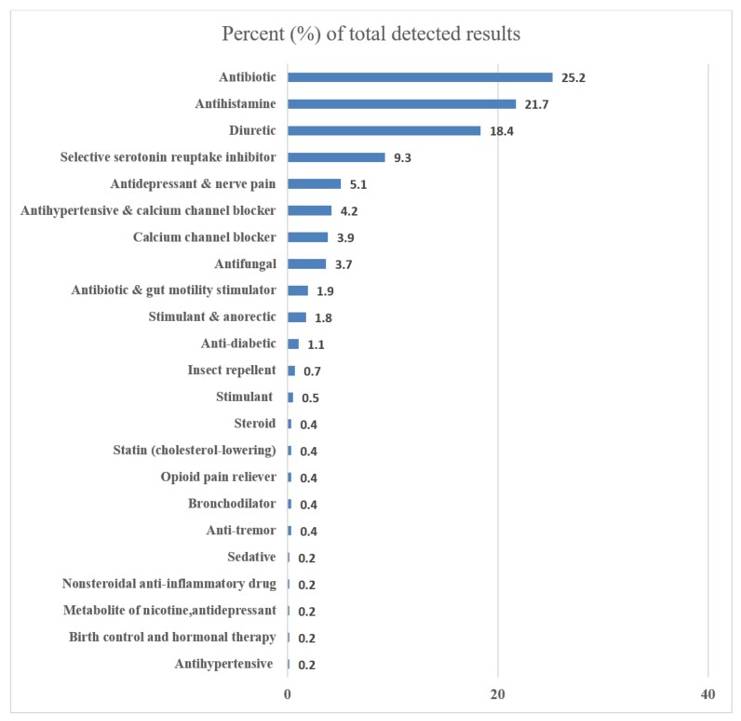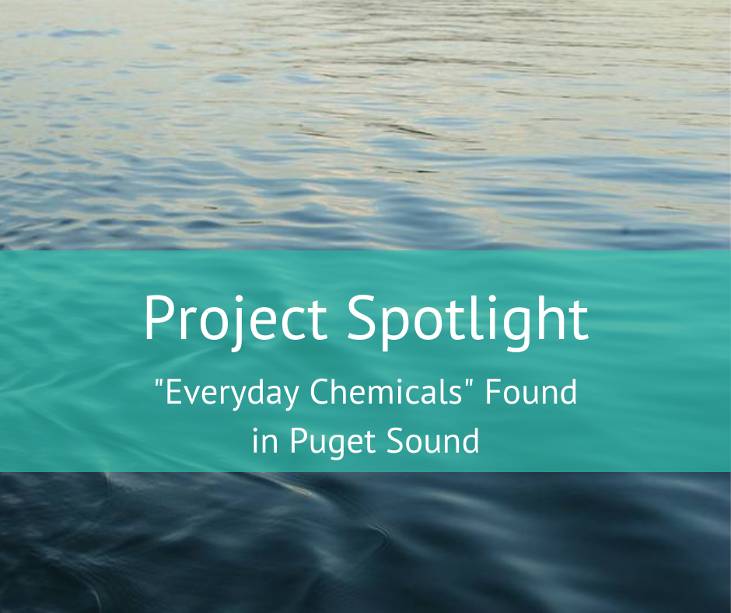Re-posting courtesy of the WA Department of Ecology. Read the original article here!
This project was partially funded by both the Watershed LO and the Stormwater Strategic Initiative
Good morning! Time to get up and wiggle your toes through the carpet, wash up with soap and shampoo, take your daily vitamins, cook your eggs in a non-stick frying pan, and brush your teeth. Later, you pull on your water-repellant jacket and boots and make your way out into the rainy Washington winter wonderland.
Without even knowing it, you’ve just used at least seven pharmaceuticals and personal care products (PPCPs) and items made with per- and polyfluoroalkyl substances (PFAS). All in a few hours… and the day has only just begun. Use of these “everyday chemicals,” a routine part of daily lives, is leaving an unintentional legacy at the bottom of Puget Sound.
What are PPCPs and PFAS, and why do we care about them?

PPCPs include thousands of prescription and over-the-counter drugs, cleaning products, and cosmetics. They are used daily for personal health and well-being, and for the care of pets and agricultural livestock. PFAS are nonstick and water-repellant chemicals used in the manufacturing of cookware, clothing, carpeting, food wrappings, fire-fighting foams, and many other products.

After consumption or use of these products, residual chemicals and byproducts are excreted or disposed of, and released to the air, water, or land without regulation or monitoring. Many of these chemicals are known to have harmful impacts to ecological and human health, are considered Contaminants of Emerging Concern (CECs), and have been detected in the environment worldwide.
The end of the line — PPCPs and PFAS in Puget Sound sediments
In the Puget Sound watershed, most contaminants are eventually washed into the Sound’s ecosystem, accumulating over time in water, sediment, and critters. Surveys conducted in the early 2000s indicated that PPCPs and PFASs were indeed present in surface-, ground-, and wastewater, and in fish tissue and osprey eggs both in and near Puget Sound. No measurements had been taken from the sand and mud at the bottom of the Sound, so our Marine Sediment Monitoring Team collected sediments from 2010 through 2019, measuring concentrations and mapping the distribution of 118 PPCPs and 24 PFAS in six urban bays and Sound-wide.
What we found at the bottom
Forty-three of 118 PPCPs were detected in 3% of all results. Detected PPCPs belonged to 23 chemical action classes. Three were detected most frequently, including 1) diphenhydramine (an antihistamine), 2) triclocarban (an antibiotic), and 3) triamterene (a diuretic).

Nine of 24 PFAS were detected in 1.7% of all results. Perfluorooctanesulfonate, PFOS, and perfluorohexanoate, PFHxA were detected most frequently. Chemical concentrations and distribution differed among sampling areas, reflecting unique “signatures” in each bay and elsewhere in the Sound. This is likely due to differing product use and disposal options used by the communities in the surrounding watersheds.
To learn more about this study
Read our report — Pharmaceuticals, Personal Care Products, and Per- and Polyfluoroalkyl Substances in Puget Sound Sediments: 2010-2019 Data Summary
Visit our companion story map containing an interactive, on-line dashboard where you may search for specific PPCP and PFAS results and generate your own custom maps and summary graphics.
Did You Know?
Through the EPA National Estuary Program, the Stormwater Strategic Initiative makes investments in many toxics research, prevention, and education projects to guide and push forward Puget Sound recovery and reduce Toxics in Fish.
This project aligns with a key strategy in the Toxics in Fish Implementation Strategy that calls for prioritization, prevention and management of chemicals of emerging concern. By understanding the type and concentrations of chemicals present in Puget Sound sediments, we can begin to prioritize those of greatest importance for regulation.
Check out some of the other toxics projects on our Funded Projects Page!
Track the status of recovery related to Toxics in Fish through the Puget Sound Partnerships Vital Sign!

